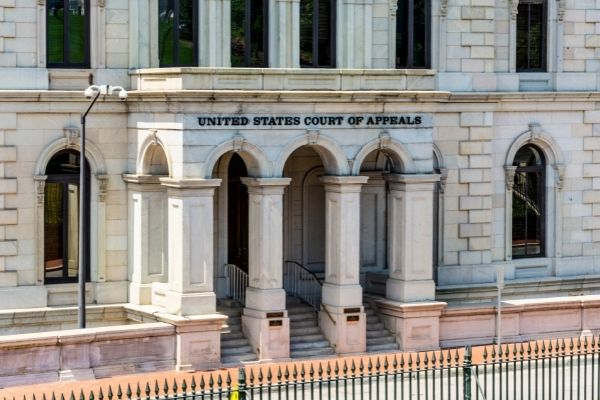Experienced Federal Crime Attorney: Expert Defense in Federal Crime Instances
Experienced Federal Crime Attorney: Expert Defense in Federal Crime Instances
Blog Article
Debunking the Refine of Federal Appeals: What You Need to Know
Navigating the complex world of federal charms can commonly feel like passing through undiscovered waters for those unfamiliar with the process. Comprehending the subtleties of appellate court territory, the details of filing a notice of appeal, providing a compelling short, and making an influential dental disagreement are crucial elements that can dramatically impact the outcome of an instance. By unraveling the layers of complexity surrounding federal charms, individuals can get a more clear understanding right into the devices that regulate this critical phase of the lawful system.
Comprehending Federal Appeals Process
Looking into the elaborate realm of the federal charms process introduces a methodical and structured trip via the judicial system - top federal appeal lawyer new jersey. Federal charms work as a critical mechanism for evaluating choices made by reduced courts. Recognizing this process is necessary for anyone entailed in legal process at the government degree
The procedure generally begins with an event dissatisfied with a lower court's ruling submitting a notice of charm. This causes a review by a greater court, where a panel of courts analyzes the legal debates presented by both celebrations. Briefs outlining the legal thinking behind each celebration's placement are submitted, and oral arguments may be heard to clear up intricate issues.
The appellate court's decision is based on an extensive examination of the reduced court's proceedings and the debates offered. As soon as the appellate court reaches a decision, it can affirm, reverse, remand, or customize the reduced court's ruling, providing clearness and finality to the lawful dispute.
Appellate Court Jurisdiction Described

Appellate courts have territory over particular sorts of instances, commonly those involving lawful errors, step-by-step problems, or concerns of law instead of factual disagreements. The jurisdiction of appellate courts is usually outlined in statutes and regulations that regulate the court system. Comprehending appellate court territory is crucial for celebrations associated with the appeals process as it identifies whether a case is eligible for testimonial and the extent to which the appellate court can interfere in the lower court's decision.
Filing a Notice of Allure
The initial step in beginning the government allures procedure includes filing a Notification of Allure with the appropriate appellate court. federal rico appeal lawyers. This crucial record officially alerts the court and the various other celebrations associated with the case that the appealing party plans to seek an evaluation of the reduced court's decision. Filing a Notification of Charm is a stringent procedural requirement that establishes the appellate procedure in movement
When preparing the Notice of Charm, it is vital to make sure compliance with the specific policies and guidelines of the pertinent appellate court. The paper has to normally include info such as the instance name, the lower court's name, the day of the judgment being appealed, and a succinct declaration showing the grounds for the charm.
Timeliness is essential when filing a Notification of Appeal. Missing the deadline for sending this paper can lead to the charm being disregarded, highlighting the relevance of exact and punctual initiation of the appeals process. It is suggested to seek legal advice to navigate the intricacies of filing a Notice of Charm effectively.
Briefing and Oral Debate
In the appellate process, providing composed briefs and participating in dental disagreements play critical duties in advocating for the appealing event's placement before the appellate court. Briefs are detailed legal documents that lay out the celebrations' debates, lawful authorities, and evaluation supporting their placements. These composed submissions supply the court with a comprehensive understanding of the facts of the case, the pertinent law, and why the appealing event believes the lower court's choice ought to be rescinded.
Complying with the entry and evaluation of the briefs, dental debates supply the parties an opportunity to additional clarify their settings, deal with any questions the appellate judges may have, and emphasize bottom lines from their written briefs. Oral arguments are an opportunity for the lawyers to persuade the judges via verbal campaigning for and responses to inquiries from the bench.

Getting the Appellate Court Choice

Verdict
To conclude, the federal allures process is a complicated however essential action in looking for justice. Recognizing the appellate court jurisdiction, filing a notification of charm, preparing briefs, and providing dental disagreements are all important components of this procedure. Inevitably, getting the appellate court decision can give clearness and resolution to legal disagreements. It is necessary to navigate the federal charms procedure with persistance and focus to detail to accomplish a reasonable end result.
As we progress from comprehending the federal charms process to exploring the details of appellate court territory, a basic facet comes to light regarding the authority and limits of these higher courts in the legal landscape. Appellate court jurisdiction refers to the scope of cases that a particular appellate court has the power to evaluate and choose upon. Unlike trial courts that hear cases for the initial time, appellate courts are limited to assessing decisions made by lower courts. Recognizing appellate court jurisdiction is vital for parties included in the allures procedure as it identifies whether a situation is qualified for review and the degree to which the appellate court can interfere in the reduced court's decision.
Whether the appellate court affirms, turns around, or remands the reduced court's choice, understanding the ramifications of the judgment is crucial for all parties entailed in the appellate process.
Report this page